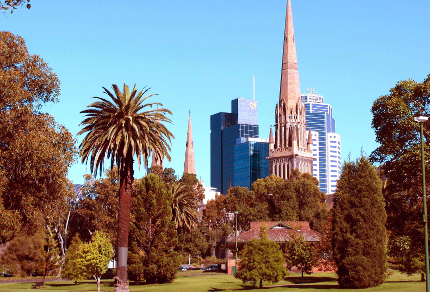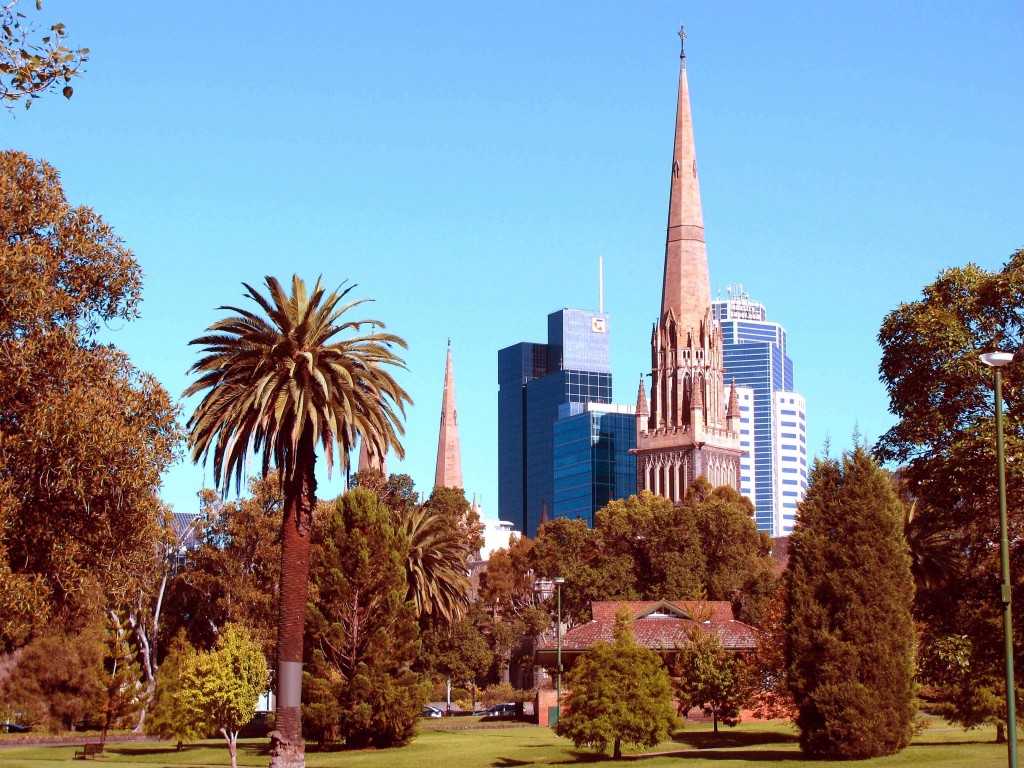
Fitzroy Gardens, with St. Patrick’s Cathedral in Background (© Magi Nams)
While Vilis registered for the animal movement conference being held on the first floor of the Rydges Melbourne, I headed out into the city with map in hand. Stepping onto Exhibition Street in Australia’s second-largest city (population 4 million)1 was like being caught up in a school of human fish swimming through a channel at the bottom of a concrete canyon. I swam east with the throng, past the corner Parliament Gardens wherein regal palms hosted fussing clusters of rainbow lorikeets; past imposing St. Patrick’s Cathedral with its soaring spires and statue of Daniel O’Connell, ‘The Liberator,’ who, according to a plaque at the base of the statue, fought for the rights of the Irish ruled by England in the early 1800’s; and then past a tour group of elderly tourists exclaiming over the cathedral’s stunning architecture and snapping photos of it.
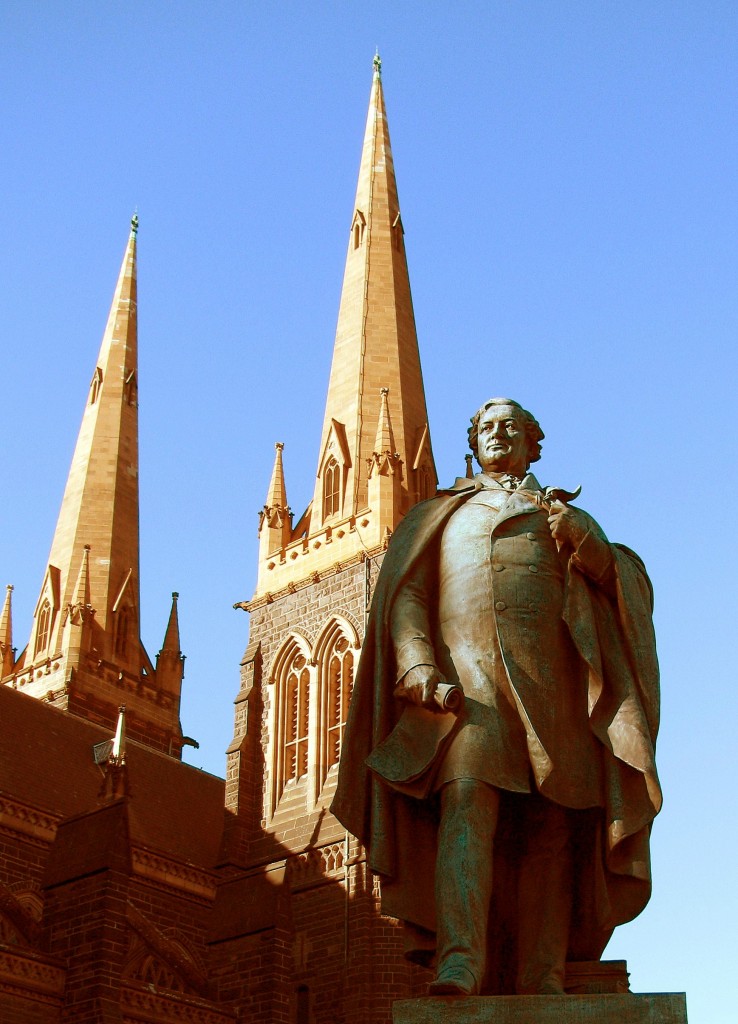
Statue of Daniel O’Connell, with St. Patrick’s Cathedral in Background (© Magi Nams)
Beyond the cathedral’s manicured grounds, I crossed Landsdowne Street and entered Fitzroy Gardens, one of Melbourne’s pair of large public gardens adjacent to the city’s core, the second being Carlton Gardens to the north of the central business district. Fitzroy Gardens were established more than 150 years ago during the flurry of development activity that followed the Victorian gold rush of the mid-1800’s.2 They cover 26 hectares or 64 acres of crown land,2 and like an antipodean micro-reflection of Rome, have many avenues leading to their heart. I noted that the intersecting broad avenues created roughly triangular plantings of lawn and shrub/flower beds having a quiet ambience totally at odds with the gardens’ border of parked cars, rushing traffic, and rising towers of steel and glass.

Shady Avenue in Fitzroy Gardens (© Magi Nams)
I strolled through the gardens for nearly two hours, sharing the fresh air and shade beneath spreading boughs of street trees with runners, workers carrying briefcases, moms with toddlers or babies in strollers, a quartet of orientals performing Tai Chi, and members of that same tour group of elderly tourists. I spotted starlings, mynas, peaceful doves, and blackbirds strutting on the lawns, and magpies, magpie-larks, rainbow lorikeets, and red wattlebirds in the profusion of trees. The wattlebirds sang sweet notes interspersed with harsh, rasping calls like those of a pheasant, and in my mental collection of avian sounds, I likened them to sweet voiced maiden snarling crudely when the lord’s back is turned.
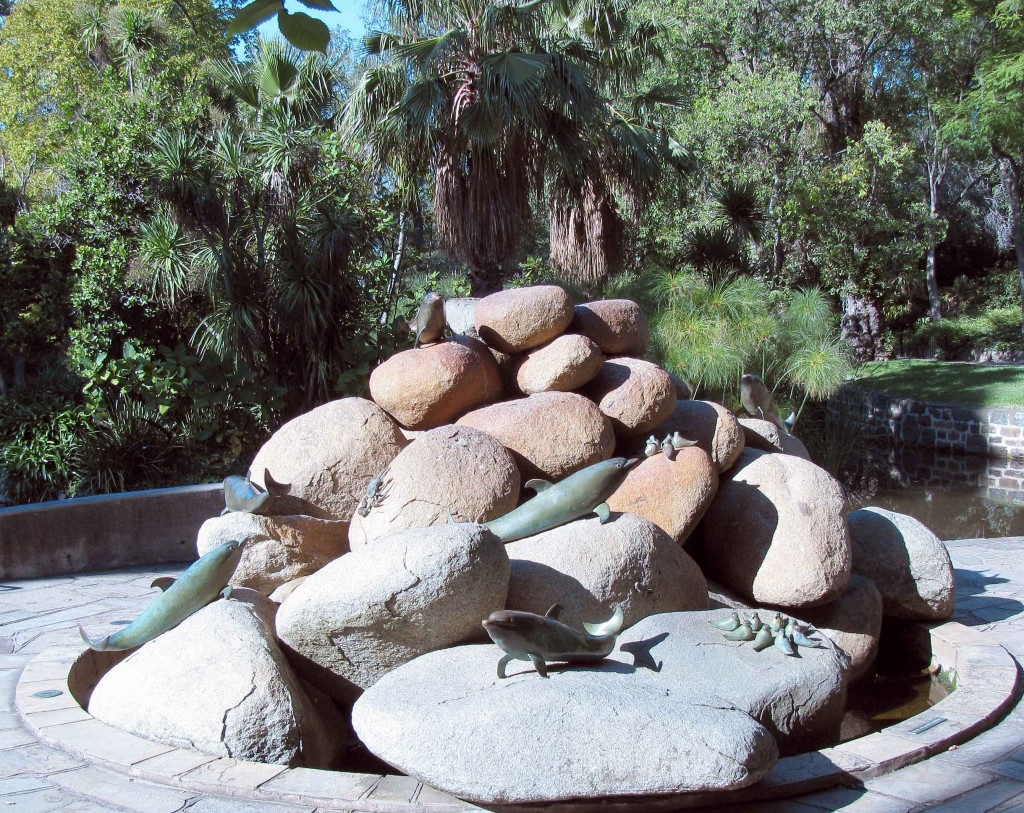
Sculptures in Fitzroy Gardens, Melbourne (© Magi Nams)
I sneezed my way through the gardens’ conservatory, with its lush displays of begonias blossoming in a dozen colours, strolled past Cook’s Cottage – the Yorkshire family home of the famous British explorer who left his mark very prominently on both New Zealand and Australia – and paused to view an installation incorporating marine life sculptures postioned among a mass of rounded boulders. The bronzed green of the dolphins, crabs, and birds seeming to soak up the sunshine beneath a bold and perfectly clear blue sky.
Few flowers were in blossom within the gardens – it was autumn, after all – and my eyes were constantly drawn to the grace and beauty of the trees, which included lindens, English elms, palms, massive Moreton Bay figs, ginkgos, and bunya bunya pines with distinctive downward-slanting branches. Some were banded with metal around their lower trunks as protection against possums, and all exuded a sense of peace, making the gardens a haven from the surrounding noise and rush of feet and vehicles.
Leaving Fitzroy Gardens, I crossed Landsdowne Street and stepped into Treasury Gardens, a quadrilateral of green space backed by the offices of the state government. I strode quickly along a diagonal avenue edged with fig trees that led to the corner of Treasury Place and Spring Street. Beside me, the buttressed trunk of each of the figs resembled a dozen legs with toes squashed against each other and partially buried in leaf-strewn soil. Two businessmen strolled toward me, their dark suits and white shirts stark beneath the grandeur of those figs with shiny, green leaves forming pointed ovals and grey trunks leaning, reaching, almost swaying.
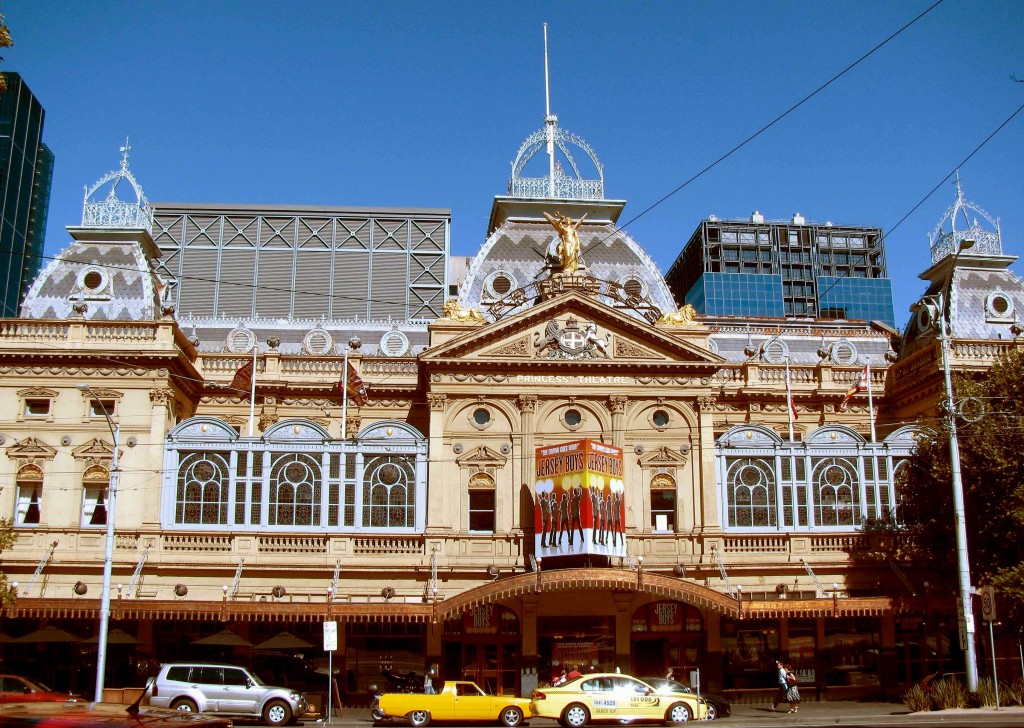
Princess Theatre, Melbourne (© Magi Nams)
Wanting to explore Carlton Gardens before meeting Vilis for lunch, I hurried north on Spring Street, past the stately but understated Victoria Parliament House built of pale sandstone. A few steps farther along, I spotted the Princess Theatre across the street, which, with its gilded lions and angel, stained glass windows, and copper-coloured awning, resembled something out of a fairytale and made Parliament House look positively plain.
Continuing up Spring Street, I connected with Nicholson Street, which led me to the southeast corner of Carlton Gardens. Banners everywhere announced the Melbourne International Flower and Garden Show, which will commence next week. As I strolled a shaded, diagonal avenue, workmen hammered loudly while erecting white, covered pavilions all around me. Near the Royal Exhibition Building – a magnificent white structure having several wings and domes – lovers clung to each other and transients slept on the lawn.
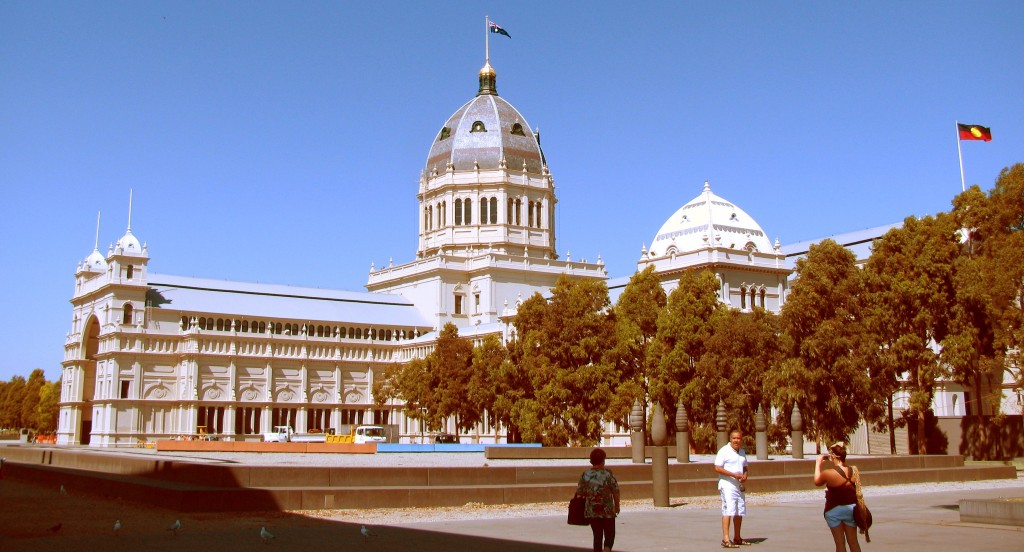
Royal Exhibition Building, Melbourne (© Magi Nams)
The Royal Exhibition Building is the only surviving 19th-century grand hall that is still in use as an exhibition venue and is a World Heritage Site.1,3 At the time it was built to host the 1880 World’s Fair, Melbourne had soared into world prominence, the riches of the Victorian gold fields making it the world’s wealthiest city in the 1880’s, less than 50 years after the city was founded in 1835 by settlers from Van Dieman’s Land, now known as Tasmania.1 When English journalist George Augustus Henry Sala visited the young city in 1885 during its blaze of worldwide glory, he called it “Marvellous Melbourne,”1 a term Melburnians still use today.
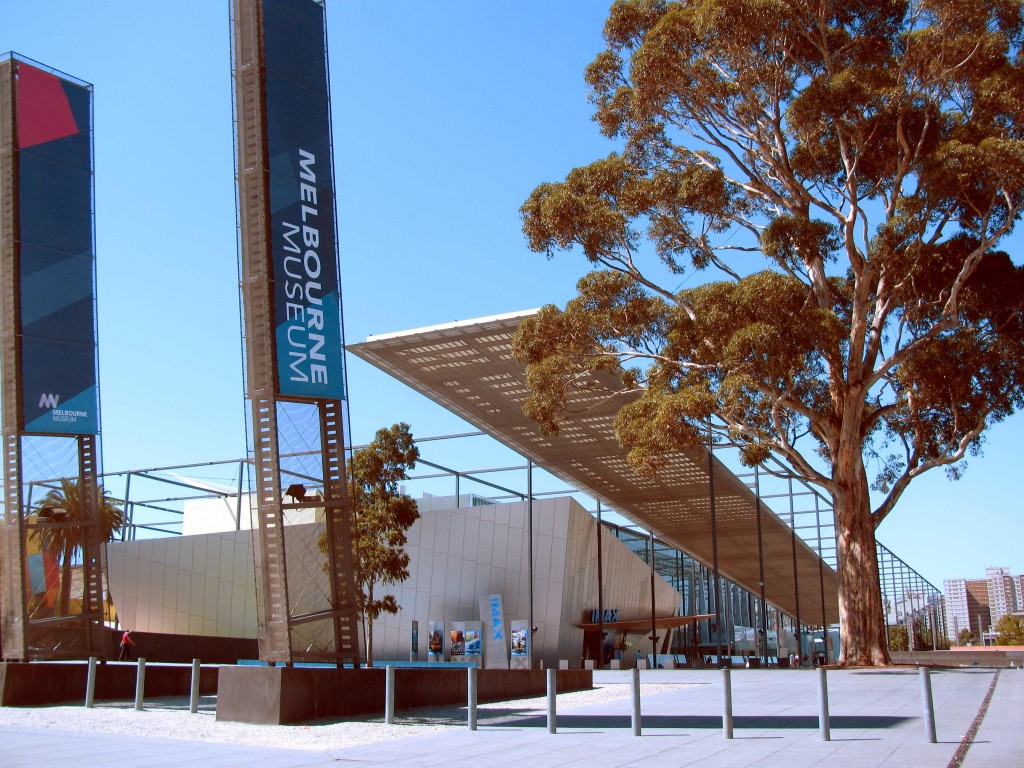
Melbourne Museum (© Magi Nams)
Strolling northward past the Royal Exhibition Building, I encountered the Melbourne Museum – the largest museum in the Southern Hemisphere4– also ensconced within Carlton Gardens and presenting nearly as striking a contrast to the Royal Exhibition Building as the Princess Theatre did to Parliament House. Designed and constructed at the end of the 20th century,4 the museum had so many beams and poles protruding from its frame, it presented the possibility of still being under construction. I decided to check it out tomorrow.
I hustled back to the Rydges, and after sharing lunch with Vilis, spent the afternoon editing photographs while heat poured down onto Melbourne. Vilis presented his talk at the end of the conference’s first day, and after the discussion following it, he and I wandered through Chinatown on Little Bourke Street, looking for a restaurant in which to eat supper.
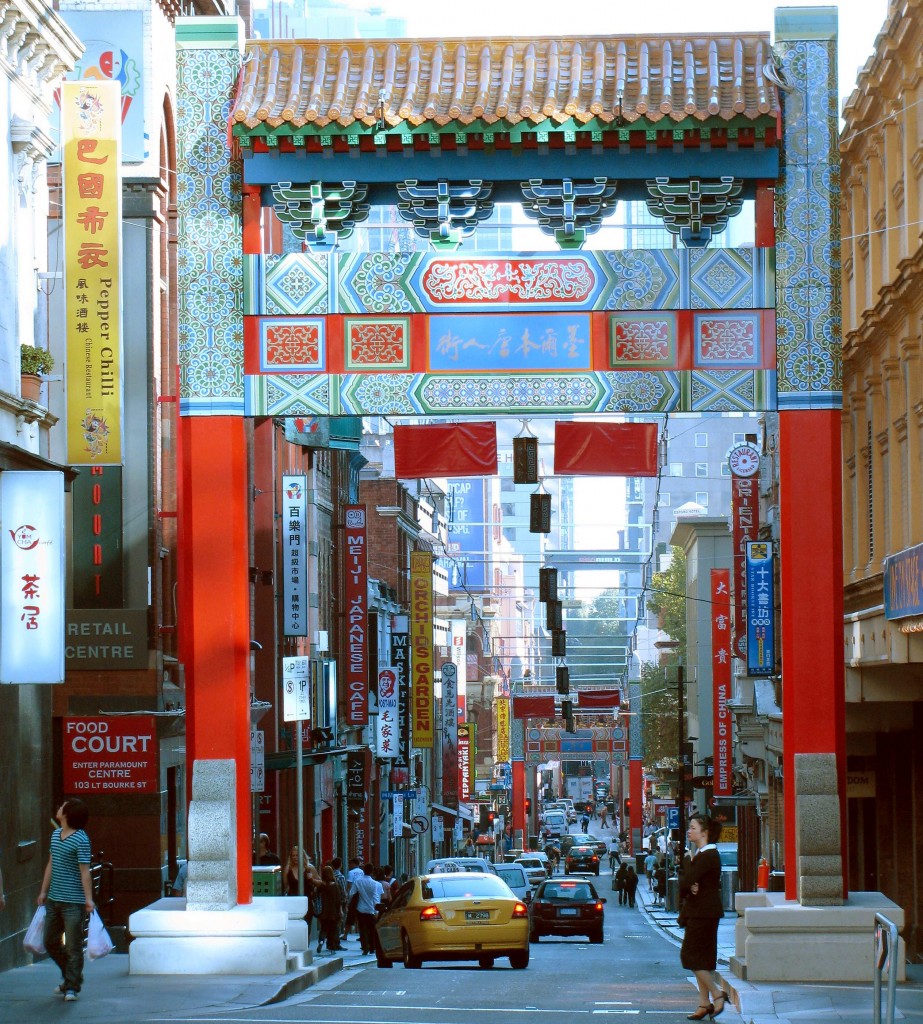
Chinatown in Melbourne (© Vilis Nams)
The street was filled with foot traffic, slow vehicles, and attractive young women with menus standing outside restaurants, hawking business for their establishments. It was astoundingly noisy and dynamic, the entire street’s length of restaurants competing for custom. We’d never seen anything like it.
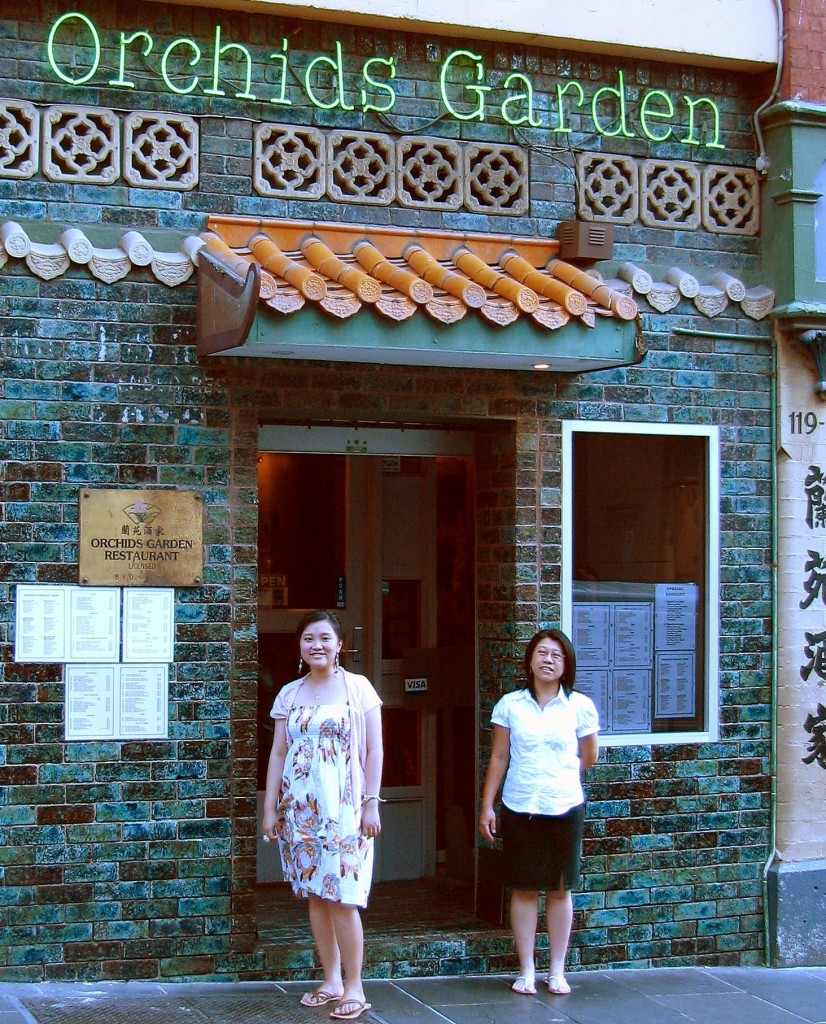
Young restaurant promoters in Chinatown (© Vilis Nams)
In the end, we ate at Orchids Garden, which was almost empty at 6 p.m. Four young waitresses fawned over us, with one dexterously serving hot foods into our bowls and periodically repleneshing our servings, while we focussed on not making a mess with our chopsticks. When we left the restaurant, it was as empty as it had been on our arrival, causing us to wonder how the business survived.
I led Vilis past St. Patricks Cathedral to Fitzroy Gardens, and then back to the Rydges in oncoming darkness. From our room on the 17th floor, we watched the city light up for the night, and I spotted the power seat of this southeastern state, the Victorian Parliament House, bathed in the glow of spotlights.
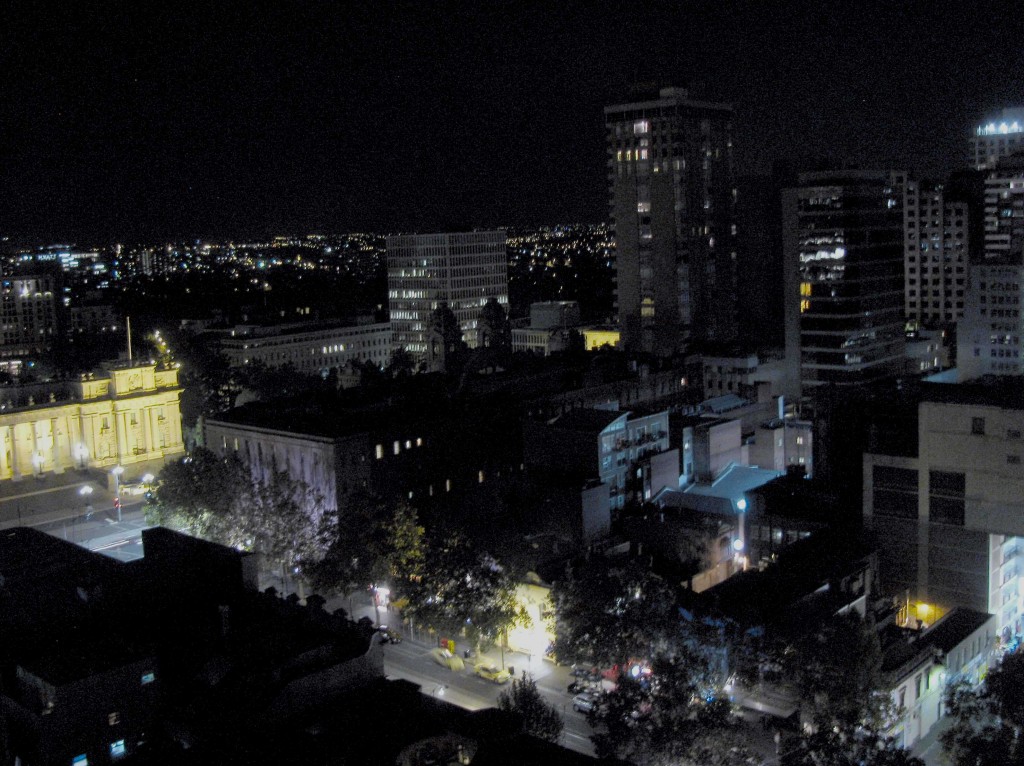
Melbourne at Night, with Victoria’s Parliament House at far left (© Vilis Nams)
References:
1. Wikipedia. Melbourne. Updated 5-Apr-2010. Accessed 6-Apr-2010. http://en.wikipedia.org/wiki/Melbourne
2. Fitzroy Gardens, Melbourne, Australia. Accessed 6-Apr-2010. http://www.fitzroygardens.com/
3. Museum Victoria. Royal Exhibition Building. © Museum Victoria. Accessed 17-Nov-2010. http://museumvictoria.com.au/reb/
4. Wikipedia Melbourne Museum. Updated 24-Oct-2010. Accessed 17-Nov-2010. http://en.wikipedia.org/wiki/Melbourne_Museum

